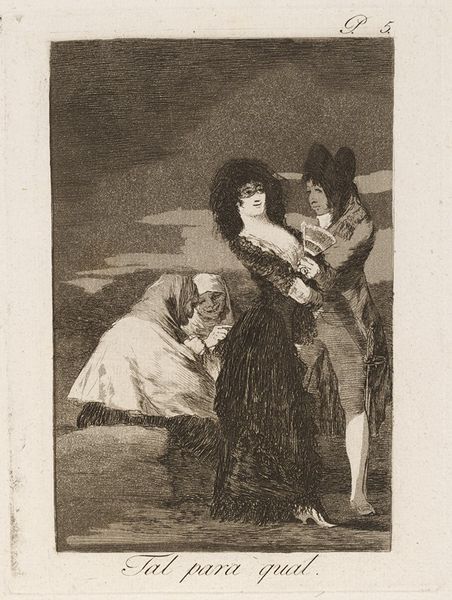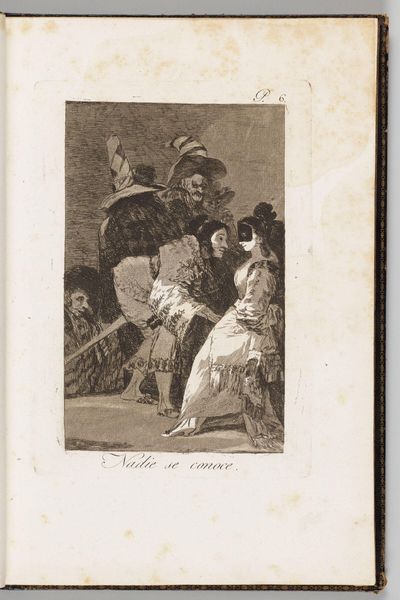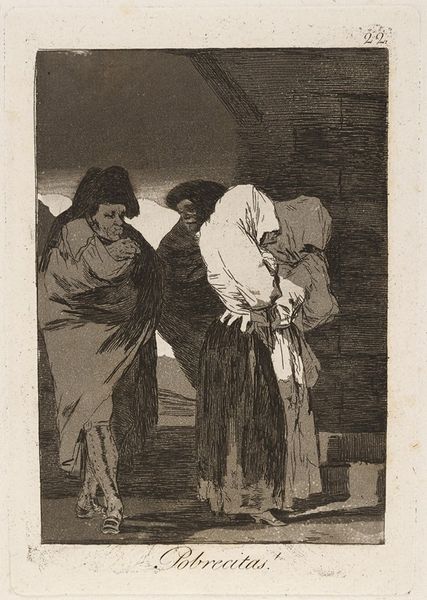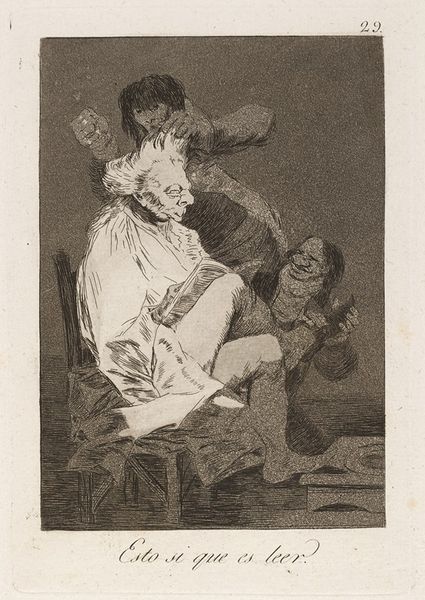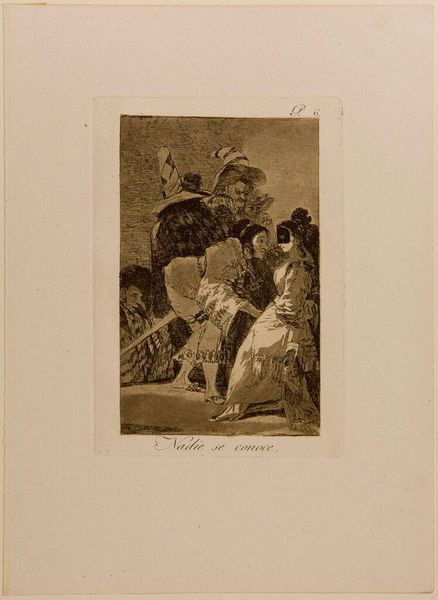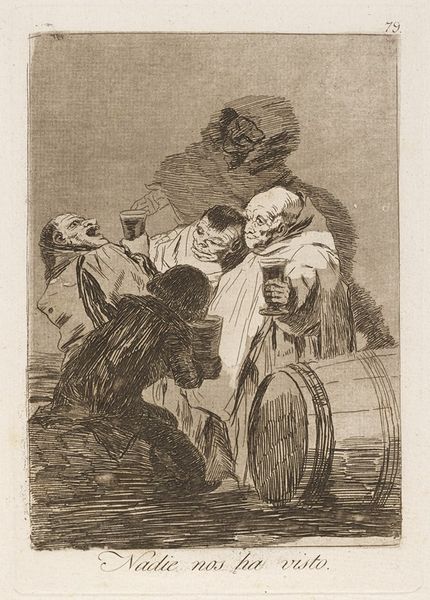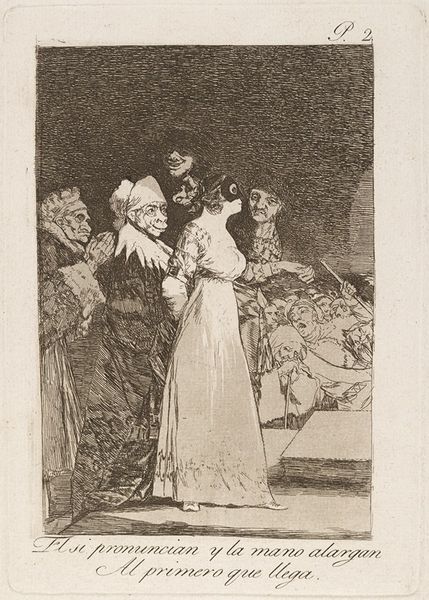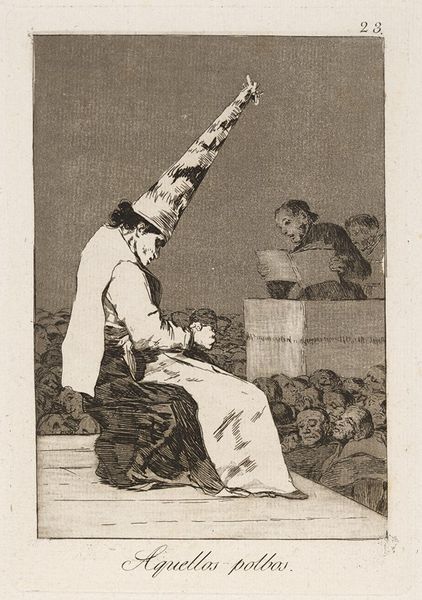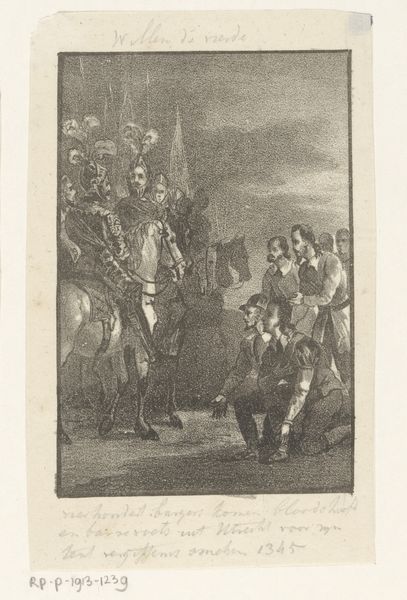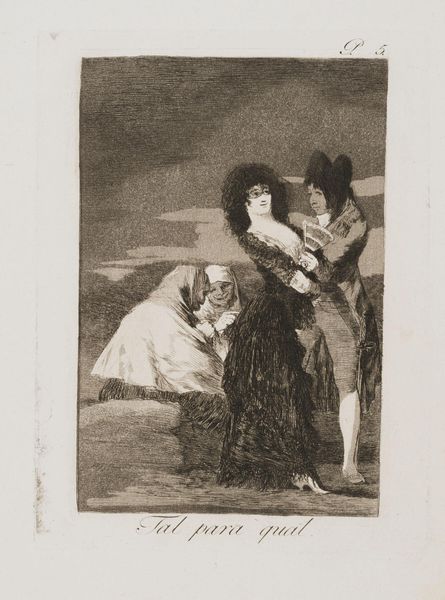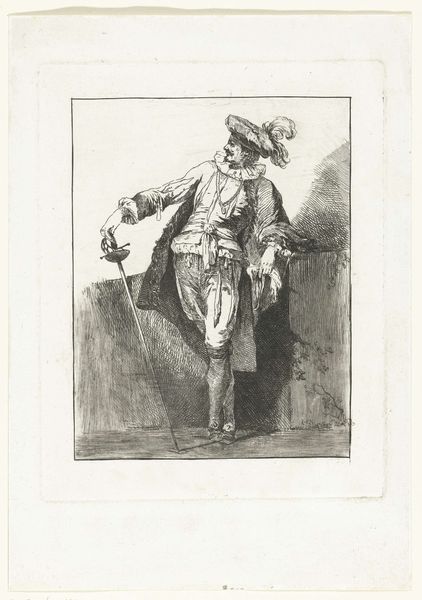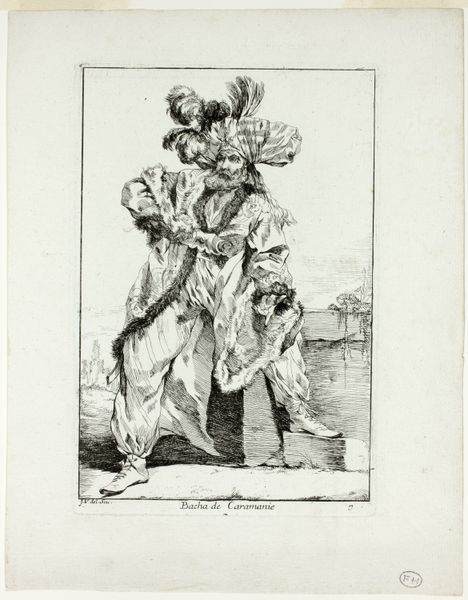
print, etching, engraving
#
portrait
#
allegory
#
narrative-art
# print
#
etching
#
caricature
#
old engraving style
#
figuration
#
romanticism
#
genre-painting
#
history-painting
#
engraving
Copyright: Public Domain: Artvee
Editor: Here we have Francisco de Goya's etching, "Nadie se conoce," from around 1796-97, which translates to "Nobody Knows Himself." The figures are masked, and there’s something unsettling about it, a sort of…performative anxiety. What do you see in this piece, especially considering the political climate of the time? Curator: Goya, through this print, isn't just depicting a carnival scene. He's holding a mirror to the hypocrisy and decadence of late 18th-century Spanish society. The masks become potent symbols. They allow a temporary freedom, yet simultaneously conceal true identities, perpetuating societal ills. The inscription "Nadie se conoce" underscores this crisis of identity. Editor: So, it’s a commentary on social roles and the superficiality of relationships? Curator: Exactly! Think about how rigid social structures and expectations were then, particularly for women. These masks, whether literal or figurative, speak volumes about the limited agency and performative identities individuals were forced to adopt. How does it make you think about contemporary society? Do we still hide behind masks? Editor: That’s fascinating. I hadn't considered the feminist reading. It makes me think about how social media functions as a mask today. We present curated versions of ourselves, hiding vulnerabilities and anxieties. Curator: Precisely! Goya’s "Nadie se conoce" remains remarkably relevant because it speaks to the universal human experience of alienation and the struggle for authentic self-expression in the face of societal pressures. It makes me consider Foucault's writing about the theatre of social life. Editor: I see it now, it really highlights the tension between revealing and concealing that exists even today. Thank you, this was enlightening! Curator: My pleasure, it’s important to bring our understanding of past works of art into dialogue with modern, intersectional discussions.
Comments
No comments
Be the first to comment and join the conversation on the ultimate creative platform.
